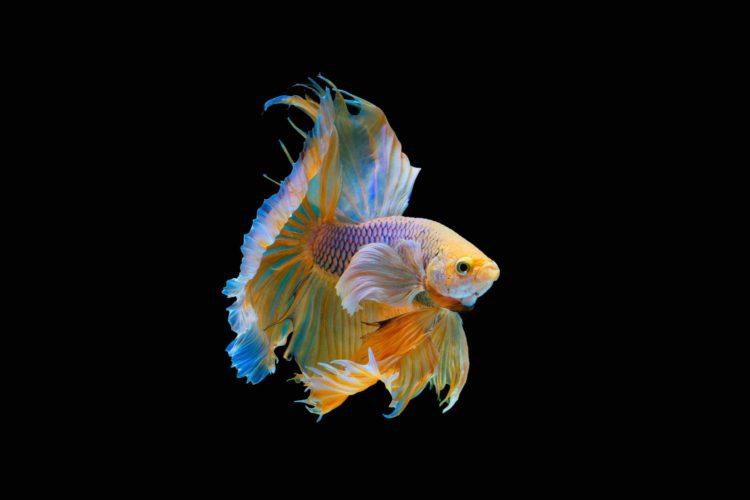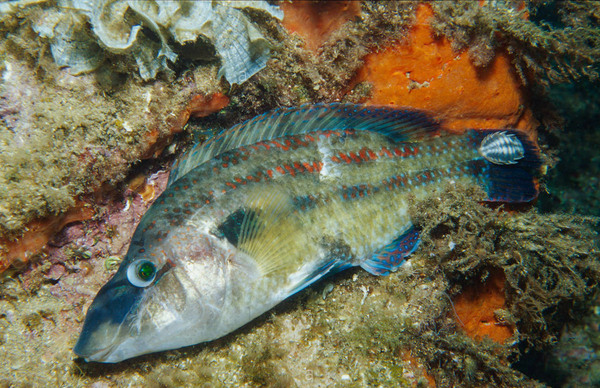Fish, unlike mammals and birds, have a very different way of sleeping. When people think of sleep, they typically imagine lying down and resting their eyes, but fish sleep is much more subtle and diverse. How do fish sleep? Do they have sleep cycles like humans? In this article, we will explore the sleeping behavior of fish, how they rest, and how fish sleep varies across species.

In simple terms, sleep is a state of rest where an organism reduces its activity, conserves energy, and recovers. Fish, however, do not sleep in the same way that humans or mammals do. They do not have eyelids (except in some species), and they remain constantly aware of their surroundings, which means their form of rest differs significantly from other animals.
Fish do experience periods of reduced activity, but their "sleep" is different from mammals. Fish lack a clear REM (Rapid Eye Movement) sleep phase, which is a defining characteristic of sleep in humans. Instead, fish enter a restful state where their brain activity and metabolism decrease.
REM Sleep in Humans: REM sleep is a sleep phase in which the body experiences vivid dreaming, and brain activity is heightened. Fish do not enter REM sleep, which is likely due to their unique physiology and the fact that their nervous systems function differently.
Restful State in Fish: Most fish enter a state of reduced activity at night. This state is often referred to as resting or quiescence rather than sleep, where their metabolic rates slow down, and they do not engage in significant movement.
Fish sleep behaviors can vary widely depending on the species, environment, and lifestyle of the fish. While many fish rest at night, some species can "sleep" during the day. Let’s take a closer look at how fish sleep and what happens during this period of rest.
One of the most common ways fish sleep is by staying in a stationary position. They often find a safe spot to "rest" and remain still to conserve energy. The fish may hover in place or swim slowly with minimal movement. Some species will even find shelter like rocks, coral, or plants where they can rest without being disturbed by predators.
Example: Certain species of fish, such as parrotfish, create a protective bubble around themselves from mucous to avoid predators while they sleep.
Unlike mammals, fish do not breathe automatically while they sleep. Instead, they continue to use their gills to extract oxygen from the water as they rest. This means fish are still actively "breathing" but are not moving around much.
Example: Fish like betta fish (also known as Siamese fighting fish) are known to float near the water surface while resting, allowing them to breathe from the air.
While fish generally remain still during sleep, some species may continue to move in a slow, rhythmic manner even while resting. For instance, species such as sharks and some species of tuna need to keep moving even while sleeping because they lack a spiral valve in their hearts, which helps circulate oxygenated blood to their brains and bodies.
Example: Sharks and other fish that live in open waters must swim continuously to ensure proper oxygenation. This is often called "sleep swimming."
Most fish are nocturnal or crepuscular in nature, meaning they are active during the night and rest during the day. This behavior helps them avoid predators that are active during daylight hours and takes advantage of the cover of darkness to rest safely.
Example: Many fish species, such as goldfish or guppies, rest at night by reducing activity levels and staying in their hiding spots.

Although fish exhibit restful behaviors, the question arises: do fish dream? Since fish lack the necessary sleep cycles (like REM sleep) associated with dreaming in mammals, it is unlikely that fish experience dreams in the way humans or other mammals do. However, their reduced activity and the restoration of their bodies during sleep likely serve important functions in the fish's health.
Scientific Viewpoint: Research on sleep in fish has indicated that sleep serves essential roles in energy conservation, immune function, and overall recovery, even if dreaming is not part of the process.
Fish are not a monolithic group, and their sleeping behaviors can differ greatly based on their environment, predation risk, and physiological traits. Some species of fish rest more actively, while others may remain completely still for extended periods.
Fish in aquariums may follow similar sleep patterns to those in the wild, but their sleep can be influenced by their surroundings. Aquatic environments in captivity can be artificially controlled (light levels, water temperature), and as such, the behavior of aquarium fish may be slightly altered from that of wild fish.
Example: Fish like neon tetras in aquariums may rest more frequently due to controlled light cycles, mimicking their natural environment.
Fish, in general, do not have eyelids (except in some species like parrotfish or catfish), meaning they cannot "close their eyes" as humans do while sleeping. This results in the common misconception that fish are always awake. However, while their eyes remain open, their brain activity decreases, and they enter a restful state.
Example: Betta fish, despite having their eyes open, rest quietly at the bottom of the tank or in floating positions, conserving energy.
To answer the question "How do fish sleep?" it’s clear that fish sleep differently from land animals. Fish enter a restful state, often staying still or swimming slowly, but they do not experience sleep in the same manner as mammals. Fish sleep plays an essential role in conserving energy and allowing for bodily repair, though it differs greatly depending on species and environmental factors.
Understanding how fish sleep can help aquarium owners create a healthier environment for their fish by mimicking their natural resting conditions. Additionally, this knowledge sheds light on the fascinating adaptations of fish to their underwater world, where sleep looks very different than it does on land.
The Science Behind Fish Behavior: Why Fish Swim in Schools
How to Create a Healthy Environment for Sleeping Fish
Can Fish Feel Pain? Understanding Fish Sensory Perception
animal tags: fish
We created this article in conjunction with AI technology, then made sure it was fact-checked and edited by a Animals Top editor.